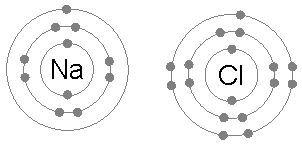Ionic bonding: Difference between revisions
m Reverting possible vandalism by 166.109.0.90 to version by Vsmith. False positive? Report it. Thanks, User:ClueBot. (286642) (Bot) |
charlie fucked kevin |
||
| Line 1: | Line 1: | ||
[[Image:Ionic bonding animation.gif|thumb|right|500px|Sodium and chlorine bonding ionically to form sodium chloride. Sodium loses its outer electron to give it a [[noble gas]] electron configuration, and this electron enters the chlorine atom exothermically. The oppositely charged ions are then attracted to each other, and their bonding releases energy. The net transfer of energy is that energy leaves the atoms, so the reaction is able to take place.]] |
[[Image:Ionic bonding animation.gif|thumb|right|500px|Sodium and chlorine bonding ionically to form sodium chloride. Sodium loses its outer electron to give it a [[noble gas]] electron configuration, and this electron enters the chlorine atom exothermically. The oppositely charged ions are then attracted to each other, and their bonding releases energy. The net transfer of energy is that energy leaves the atoms, so the reaction is able to take place.]] |
||
kevin and charlie |
|||
An '''ionic bond''' (or '''electrovalent bond''') is a type of [[chemical bond]] that can often form between [[metal]] and [[non-metal]] [[ion]]s (or [[polyatomic ions]] such as [[ammonium]]) through [[electrostatic]] attraction. In short, it is a bond formed by the attraction between two oppositely charged ions. |
An '''ionic bond''' (or '''electrovalent bond''') is a type of [[chemical bond]] that can often form between [[metal]] and [[non-metal]] [[ion]]s (or [[polyatomic ions]] such as [[ammonium]]) through [[electrostatic]] attraction. In short, it is a bond formed by the attraction between two oppositely charged ions. |
||
Revision as of 16:46, 25 March 2008

kevin and charlie
An ionic bond (or electrovalent bond) is a type of chemical bond that can often form between metal and non-metal ions (or polyatomic ions such as ammonium) through electrostatic attraction. In short, it is a bond formed by the attraction between two oppositely charged ions.
The metal donates one or more electrons, forming a positively charged ion or cation with a stable electron configuration. These electrons then enter the non metal, causing it to form a negatively charged ion or anion which also has a stable electron configuration. The electrostatic attraction between the oppositely charged ions causes them to come together and form a bond.
For example, common table salt is sodium chloride. When sodium (Na) and chlorine (Cl2) are combined, the sodium atoms each lose an electron, forming a cation (Na+), and the chlorine atoms each gain an electron to form an anion (Cl-). These ions are then attracted to each other in a 1:1 ratio to form sodium chloride (NaCl).
- 2Na + Cl2 → 2Na+ + 2Cl- → 2NaCl

The removal of electrons from the atoms is endothermic and causes the ions to have a higher energy. There may also be energy changes associated with breaking of existing bonds or the addition of more than one electron to form anions. However, the attraction of the ions to each other lowers their energy.
Ionic bonding will occur only if the overall energy change for the reaction is favourable – when the bonded atoms have a lower energy than the free ones. The larger the resulting energy change the stronger the bond. The low electronegativity of metals and high electronegativity of non-metals means that the energy change of the reaction is most favorable when metals lose electrons and non-metals gain electrons.
Pure ionic bonding is not known to exist. All ionic bonds have a degree of covalent bonding or metallic bonding. The larger the difference in electronegativity between two atoms, the more ionic the bond. Ionic compounds conduct electricity when molten or in solution. They generally have a high melting point and tend to be soluble in water.
Polarization effects
Ions in crystal lattices of purely ionic compounds are spherical; however, if the positive ion is small and/or highly charged, it will distort the electron cloud of the negative ion. This polarization of the negative ion leads to a build-up of extra charge density between the two nuclei, i.e., to partial covalency. Larger negative ions are more easily polarized, but the effect is usually only important when positive ions with charges of 3+ (e.g., Al3+) are involved (e.g., pure AlCl3 is a covalent molecule). However, 2+ ions (Be2+) or even 1+ (Li+) show some polarizing power because their sizes are so small (e.g., LiI is ionic but has some covalent bonding present).
Ionic structure
Ionic compounds in the solid state form a continuous ionic lattice structure in an ionic crystal. The simplest form of ionic crystal is a simple cubic. This is as if all the atoms were placed at the corners of a cube. This unit cell has a weight that is the same as 1 of the atoms involved. When all the ions are approximately the same size, they can form a different structure called a face-centered cubic (where the weight is 4atomic weight), but, when the ions are different sizes, the structure is often body-centered cubic (2 times the weight). In ionic lattices the coordination number refers to the number of connected ions.
Ionic versus covalent bonds
In an ionic bond, the atoms are bound by attraction of opposite ions, whereas, in a covalent bond, atoms are bound by sharing electrons. In covalent bonding, the molecular geometry around each atom is determined by VSEPR rules, whereas, in ionic materials, the geometry follows maximum packing rules.
Electrical conductivity
Ionic substances in solution conduct electricity because the ions are free to move and carry the electrical charge from the anode to the cathode. Ionic substances conduct electricity when molten because atoms (and thus the electrons) are mobilised. Electrons can flow directly through the ionic substance in a molten state.
Substances in ionic form
|
| ||||||||||||||||||||||||||||||||||||||||||||||||||||||||||||||||||||||||||||||||||||||||||||||||||||||||||||||||||||||||||||||||||||||||||||||||||||||||||||||||||||||||||||||||||||||||||||||||||||||||||||||||||||||||||||||||||||||||||||||||||||||||||||||||||||||||||||||||||||||||||||||||||||||




